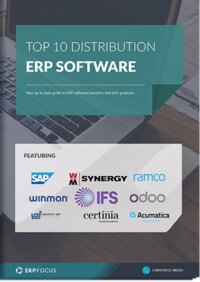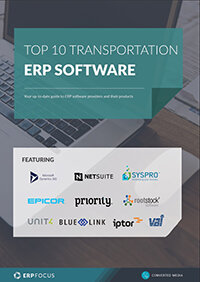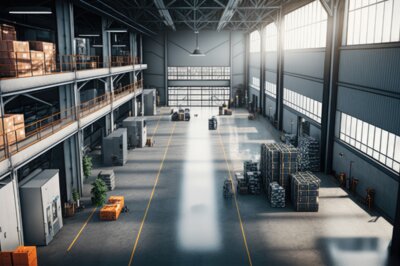Three ways distribution ERP helps supply chain automation
Automation. Years ago in the movies, the keyword was plastics. Today it could be supply chain automation as the key to the future. Many decisions and actions should be the result of pre-defined courses of action. Establish a set of rules and automate wherever possible leaving the exceptions time for careful consideration. Automation can help us manage our supply chain and distribution ERP is at the heart of it all.
1. Robotics integration
Software robotics is ready right now to help with high-volume, low-risk tasks. These “bots” live with your ERP data and perform in real time - tasks a person might spend hours performing. Are all the necessary fields completed with data that probably is useful? We don’t need a person for this task. Have suppliers replied yet with confirmations or advance shipping notices? If the answer is no, the robot can send an initial reminder automatically and prompt the buyer only if that reminder is ignored. The Institute for Robotic Process Automation says a suitable robot can reduce costs by up to 50%.
Process robotics is another developing technology. Process robotics remove people from repetitive tasks and never stray from their instructions. We know a delivery is scheduled today. While we don’t know yet when the truck will arrive, we can begin to schedule the docks. If the products on the truck require a forklift, we can eliminate all docks without lift access immediately. When the driver comes to the building, we can read his trailer identification, check which of the forklift doors is available right now and flash a message to the driver to proceed to dock J14. No visit to the office is required.
2. Integration with other enterprise systems
Today’s ERP systems all can communicate with other systems through web services. Warehouse management and transportation management systems communicate using the same technology. ERP knows an order is due for delivery today. A link to WMS signals a person to select the items that customer wants and move them to a shipping dock. A second communication to TMS schedules the right vehicle for those products and a trip to that happy customer’s receiving dock.
3. Real-time tracking and monitoring
In Perth, Australia, operators remotely control driverless trucks at a pit mine 1,200 kilometers away. Ore that was on the floor of the pit has now moved to a new operation in the ERP system, the crushing operation. Google has driven cars with no drivers for years already and Mercedes Benz is working on driverless tractor-trailer rigs to carry loads on our highways. The shipper’s ERP tracks the progress until the cargo is delivered. The receiver’s ERP instantly and automatically recognizes the delivery and updates the purchase order and inventory status.
Seaports around the world unload containers from trucks and carry those containers dockside. Those containers move along wired tracks in the concrete to a spot where quay cranes can load them onto cargo ships. The shipper and receiver both know the status of their orders among many other orders inside the same forty foot cargo container. Automated guided vehicles move up and down warehouse racks picking and putting away stocks and recording exactly the transactions in ERP systems in real time.
Many of us already use some forms or supply chain automation. More and more are being developed and it is up to us to find what helps our businesses.
Free white paper

7 steps to selecting distribution ERP
Get expert advice on distribution ERP selection and requirements analysis

Featured white papers
-

Top 10 Distribution Software Comparison
Compare the best distribution ERP systems available today
Download -

Top 10 Transportation ERP Software Comparison
Get your free comparison of the top 10 transportation ERPs
Download -

7 steps to selecting distribution ERP
Get expert advice on distribution ERP selection and requirements analysis
Download
Related articles
-

ERP for Food Distributors: Key Functionality
In a modern world where products are tailored to consumers, why should ERP for food distributors ...
-

CMMC Compliance: What Aerospace and Defense Manufacturers Need to Know
Key insights on CMMC compliance, deadlines, and securing DoD contracts with CMMC 2.0 certificatio...
-

How to use ERP workflow to improve supply chain management
Learn how automated ERP workflows can improve order management, production scheduling and more su...

